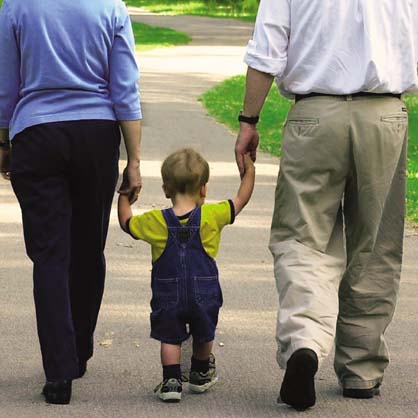 People commonly worry about telling their spouse they want a divorce. It is obviously a difficult conversation to have. Some people are scared of the outcome or don’t want to hurt someone they care about. Other people just don’t know what words to use. People may also worry that their spouse will pressure them into making a different decision.
People choose to address this situation in different ways. The way this message is communicated can greatly impact how the process goes and even what the resolutions may be. Here are some things to keep in mind when telling your partner you want a divorce.
1. Divorce readiness may take time. It is not uncommon for two spouses to be at different points in readiness for divorce. One spouse may want the divorce to happen right away and the other may wish it never happens. Be patient with your partner and know, that you can have a divorce in Minnesota no matter (no fault state), but sometimes patience with where your spouse is at may lead to better outcomes in the end.
2. Know there are process options. People often think they need to be ready to proceed with a litigated divorce as soon as they tell their spouse. That is not always the case. Know there are different ways to move through the process and one in particular, collaborative divorce, allows for flexibility on timing. You can pace the process in a way that works for both of you without a court intervening.
3. Discernment counseling can help. Sometimes, once a couple begins to talk about divorce, they start to question whether or not it is the best option. Discernment counseling is a specialty therapy that helps couples where one or both are considering a divorce, or are ambivalent about the future of their relationship.
4. Empathy is often the hardest part. Undoubtedly, when divorce is on the table, things haven’t been going well. There are often hard feelings between the spouses and that is not likely to change just with initiating divorce. However, the ability for one person to consider things from the other’s shoes can go a long way in healing. Try to demonstrate some sort of empathy when you have this talk – say things like “I know this is hard” or “I could understand if you feel surprised/angry/scared.” This may help lower the conflict and help initiate the divorce process in a respectful way.
People commonly worry about telling their spouse they want a divorce. It is obviously a difficult conversation to have. Some people are scared of the outcome or don’t want to hurt someone they care about. Other people just don’t know what words to use. People may also worry that their spouse will pressure them into making a different decision.
People choose to address this situation in different ways. The way this message is communicated can greatly impact how the process goes and even what the resolutions may be. Here are some things to keep in mind when telling your partner you want a divorce.
1. Divorce readiness may take time. It is not uncommon for two spouses to be at different points in readiness for divorce. One spouse may want the divorce to happen right away and the other may wish it never happens. Be patient with your partner and know, that you can have a divorce in Minnesota no matter (no fault state), but sometimes patience with where your spouse is at may lead to better outcomes in the end.
2. Know there are process options. People often think they need to be ready to proceed with a litigated divorce as soon as they tell their spouse. That is not always the case. Know there are different ways to move through the process and one in particular, collaborative divorce, allows for flexibility on timing. You can pace the process in a way that works for both of you without a court intervening.
3. Discernment counseling can help. Sometimes, once a couple begins to talk about divorce, they start to question whether or not it is the best option. Discernment counseling is a specialty therapy that helps couples where one or both are considering a divorce, or are ambivalent about the future of their relationship.
4. Empathy is often the hardest part. Undoubtedly, when divorce is on the table, things haven’t been going well. There are often hard feelings between the spouses and that is not likely to change just with initiating divorce. However, the ability for one person to consider things from the other’s shoes can go a long way in healing. Try to demonstrate some sort of empathy when you have this talk – say things like “I know this is hard” or “I could understand if you feel surprised/angry/scared.” This may help lower the conflict and help initiate the divorce process in a respectful way.  People commonly worry about telling their spouse they want a divorce. It is obviously a difficult conversation to have. Some people are scared of the outcome or don’t want to hurt someone they care about. Other people just don’t know what words to use. People may also worry that their spouse will pressure them into making a different decision.
People choose to address this situation in different ways. The way this message is communicated can greatly impact how the process goes and even what the resolutions may be. Here are some things to keep in mind when telling your partner you want a divorce.
1. Divorce readiness may take time. It is not uncommon for two spouses to be at different points in readiness for divorce. One spouse may want the divorce to happen right away and the other may wish it never happens. Be patient with your partner and know, that you can have a divorce in Minnesota no matter (no fault state), but sometimes patience with where your spouse is at may lead to better outcomes in the end.
2. Know there are process options. People often think they need to be ready to proceed with a litigated divorce as soon as they tell their spouse. That is not always the case. Know there are different ways to move through the process and one in particular, collaborative divorce, allows for flexibility on timing. You can pace the process in a way that works for both of you without a court intervening.
3. Discernment counseling can help. Sometimes, once a couple begins to talk about divorce, they start to question whether or not it is the best option. Discernment counseling is a specialty therapy that helps couples where one or both are considering a divorce, or are ambivalent about the future of their relationship.
4. Empathy is often the hardest part. Undoubtedly, when divorce is on the table, things haven’t been going well. There are often hard feelings between the spouses and that is not likely to change just with initiating divorce. However, the ability for one person to consider things from the other’s shoes can go a long way in healing. Try to demonstrate some sort of empathy when you have this talk – say things like “I know this is hard” or “I could understand if you feel surprised/angry/scared.” This may help lower the conflict and help initiate the divorce process in a respectful way.
People commonly worry about telling their spouse they want a divorce. It is obviously a difficult conversation to have. Some people are scared of the outcome or don’t want to hurt someone they care about. Other people just don’t know what words to use. People may also worry that their spouse will pressure them into making a different decision.
People choose to address this situation in different ways. The way this message is communicated can greatly impact how the process goes and even what the resolutions may be. Here are some things to keep in mind when telling your partner you want a divorce.
1. Divorce readiness may take time. It is not uncommon for two spouses to be at different points in readiness for divorce. One spouse may want the divorce to happen right away and the other may wish it never happens. Be patient with your partner and know, that you can have a divorce in Minnesota no matter (no fault state), but sometimes patience with where your spouse is at may lead to better outcomes in the end.
2. Know there are process options. People often think they need to be ready to proceed with a litigated divorce as soon as they tell their spouse. That is not always the case. Know there are different ways to move through the process and one in particular, collaborative divorce, allows for flexibility on timing. You can pace the process in a way that works for both of you without a court intervening.
3. Discernment counseling can help. Sometimes, once a couple begins to talk about divorce, they start to question whether or not it is the best option. Discernment counseling is a specialty therapy that helps couples where one or both are considering a divorce, or are ambivalent about the future of their relationship.
4. Empathy is often the hardest part. Undoubtedly, when divorce is on the table, things haven’t been going well. There are often hard feelings between the spouses and that is not likely to change just with initiating divorce. However, the ability for one person to consider things from the other’s shoes can go a long way in healing. Try to demonstrate some sort of empathy when you have this talk – say things like “I know this is hard” or “I could understand if you feel surprised/angry/scared.” This may help lower the conflict and help initiate the divorce process in a respectful way. 






